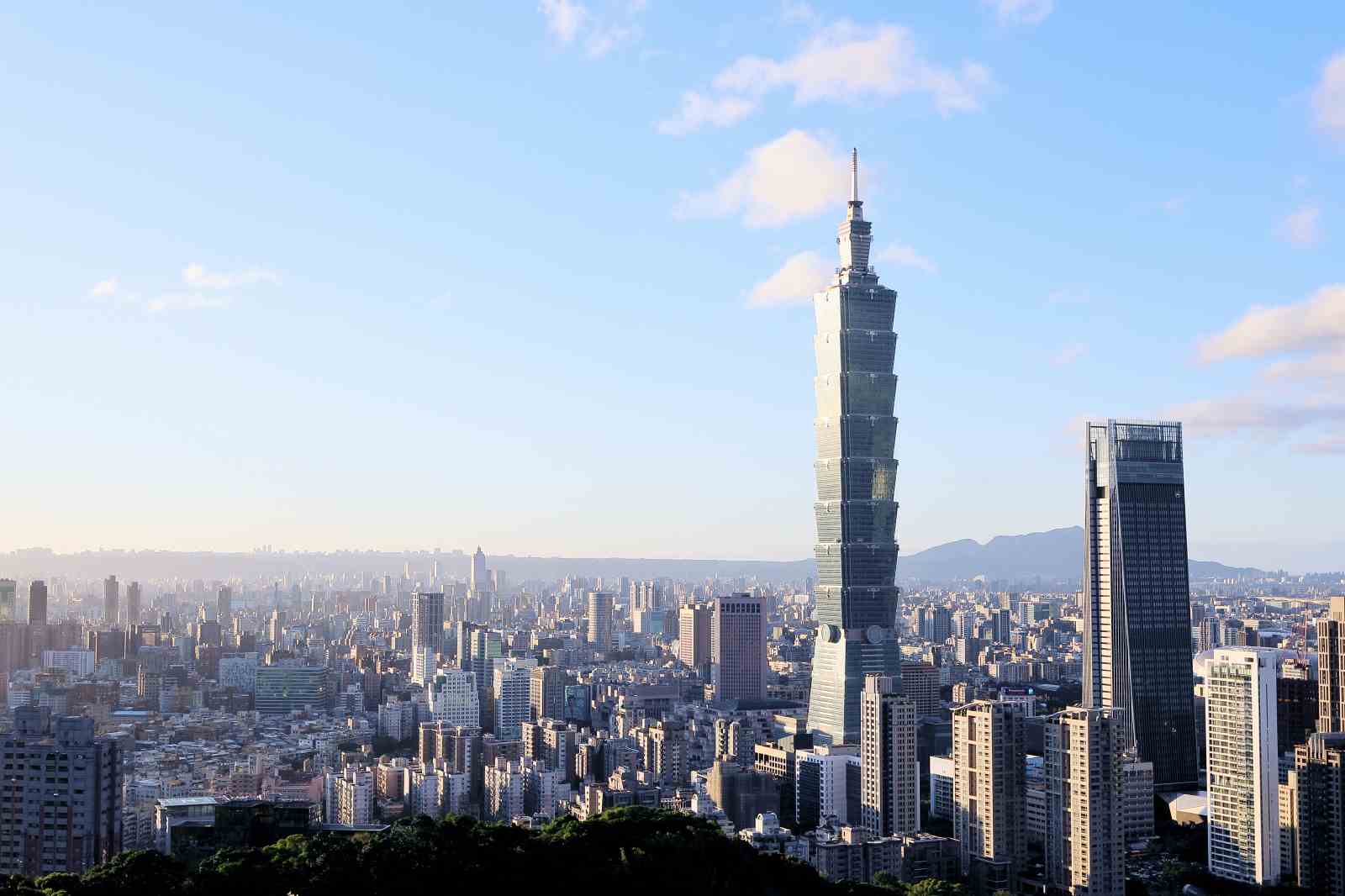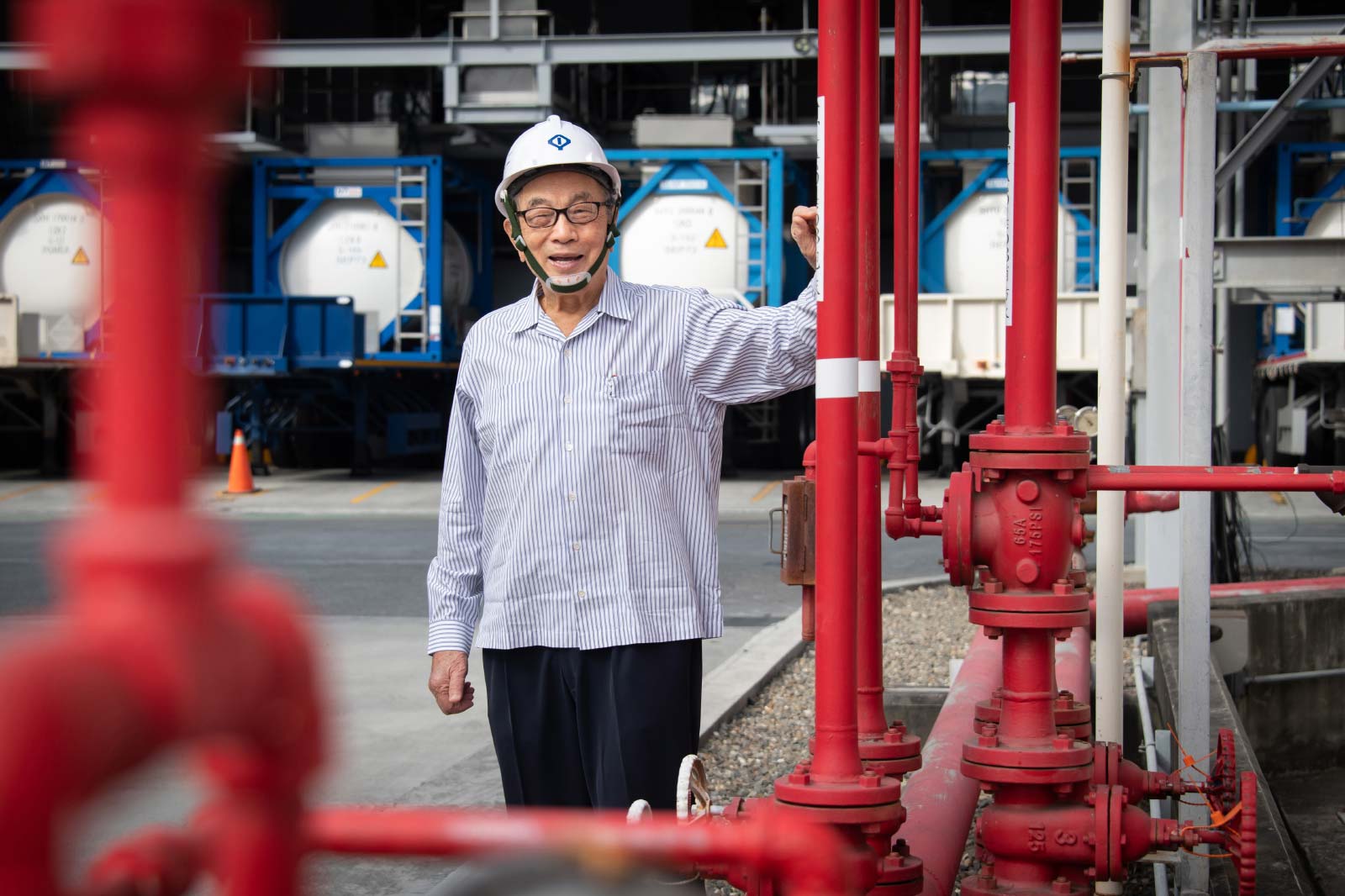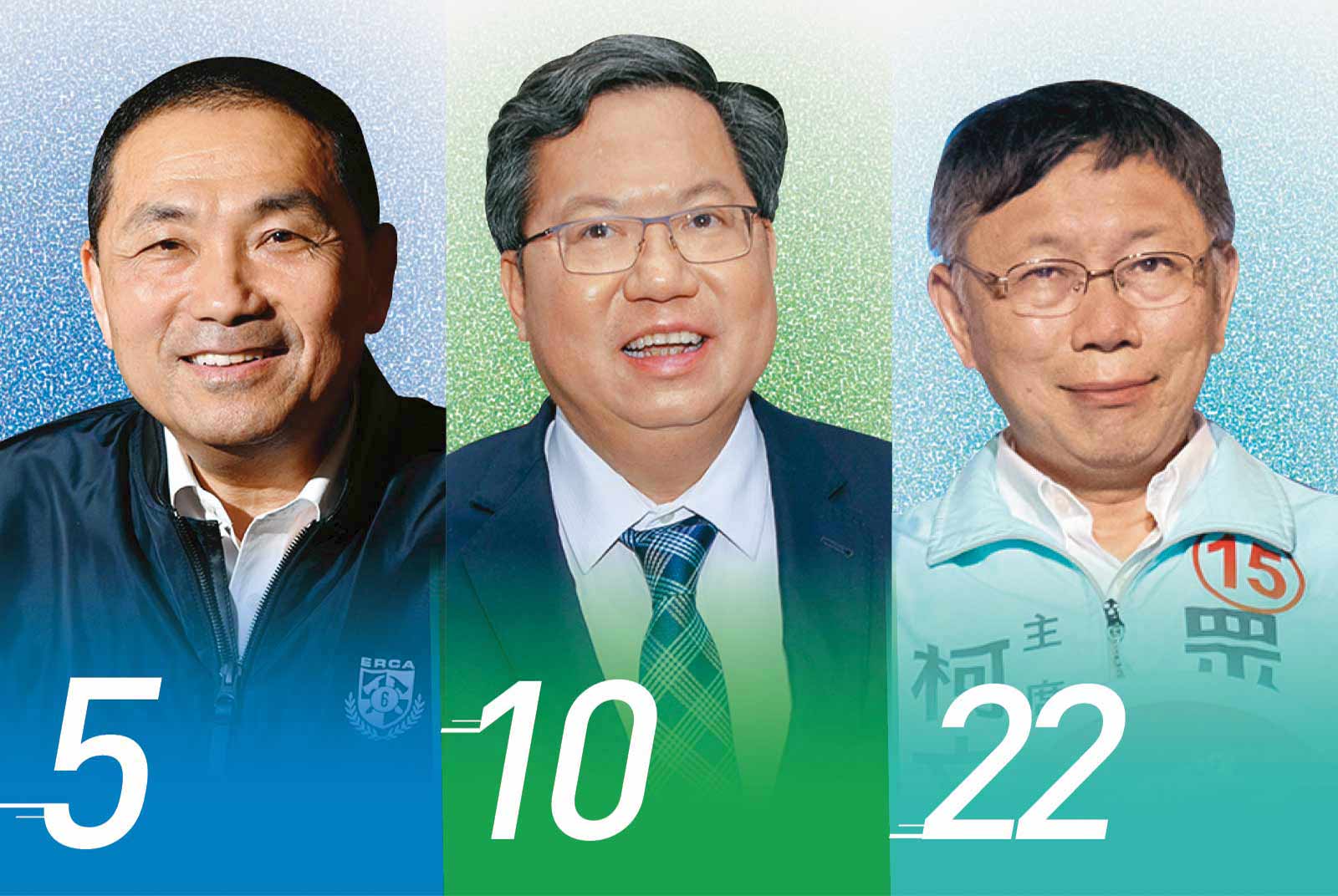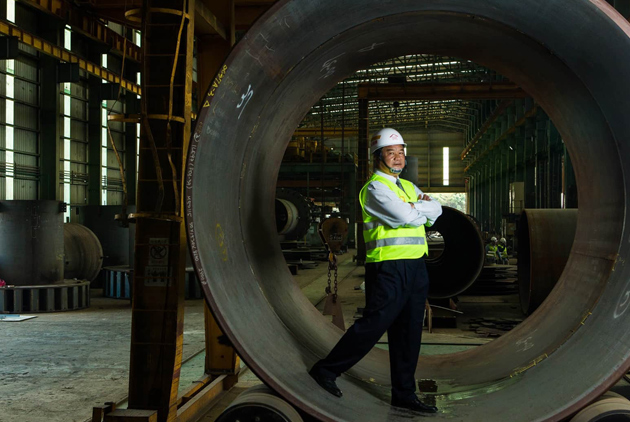2012 Top 1000 Survey
Deciphering the New World of Ecosystems

Source:cw
Globalization has intensified competition everywhere. To survive, companies need to cooperate with potential rivals to thrive in common ecosystems and grab a share of mainstream markets.
Views
Deciphering the New World of Ecosystems
By David HuangFrom CommonWealth Magazine (vol. 497 )
Steve Jobs may be gone, but Apple Inc. has no intention of scaling back on innovation. Having already transformed the industrial ecosystems related to personal computers, mobile communications, and even music and books, this technology giant may soon take the leap into television with a high-definition iTV, only further confounding efforts to use any single field to define it.
This is the new state of global competition.
The global market very much resembles a tropical rain forest, a place where many diverse and colorful ecosystems compete to survive and thrive. Apple has forged its own ecosystem, which includes a Taiwanese technology supply chain, Hollywood's movie industry, and Sony Music Entertainment (Japan) Inc.
This new state of global competition blurs the boundaries between competitors, making it hard to identify where the enemy is and what it looks like.
Partner or Rival?
The emergence of this new competitive ecosystem coincides with the findings of CommonWealth Magazine's 2012 survey of Taiwan's Top 1000 Enterprises.
Aside from categorizing the Top 1000 by sub-sector, as has been done in the past, CommonWealth Magazine decided to separately classify companies into four broad mainstream markets: those related to well-being, mobility, health and eco-friendliness. The result? Each one of them has seen revenues grow by more than NT$700 billion over the past five years, and they are all comprised of a diverse group of enterprises.
A closer analysis reveals that these fast-growing Taiwanese companies from different fields are constantly cooperating with domestic and foreign partners to create unique ecosystems. Their partners may be other members of the supply chain or even former competitors.
Bou-wen Lin, the director general of the National Applied Research Laboratories' Science & Technology Policy Research and Information Center, observes that the actual functions of Apple's iPod were not vastly different from those offered by standard MP3s, but it got a boost when the broadband age arrived and music files could be easily downloaded from the Internet.
Apple quickly launched a pay-for-music download service that also offered benefits to music providers, a model that furnished its ecosystem with innovation and extra nourishment, enabling it to become powerful and stand out.
Lin likes the analogy comparing today's competitive environment to a rain forest rich in biological diversity. "You now have a lot of trouble discerning who your competitors are. You have to cooperate with others, including your enemies," Lin says.
"In a rain forest, the rain, the air and the sunlight are all like markets. If you want to be recognized in the market, you have to be part of the ecosystem," Lin adds. The rain forest's complicated environment – where organisms and genes are constantly evolving within an ecosystem – can easily foster a huge monster like Apple. Taiwan's vendors need to form their own ecosystems to avoid being devoured by giants.
Those who fail to find a place in a major ecosystem will be knocked out of the market.
Taiwanese vendors may be facing just such a threat in the electronics industry.
"What I'm most worried about would be a settlement of patent lawsuits by Apple and Samsung. If the two exchange patent usage rights, Apple could contract Samsung to make more of its iPhone and iPad components. That would leave a smaller pie for Taiwanese contract manufacturers to fight over," cautioned Ho-Ming Huang, chairman and CEO of Atelligent Global Consulting Corp.
On April 17, just days after Huang warned of the scenario, a first step was being taken to make it a reality. Judge Lucy Koh of the United States District Court for the Northern District of California ordered Apple and Samsung Electronics Co. to meet for settlement talks on their patent dispute.
Apple CEO Tim Cook and Samsung CEO Gee-Sung Choi are expected to attend the talks, scheduled for May 21-22. The prospect of those negotiations has rattled Taiwanese suppliers in Apple's supply chain.
The settlement negotiations and their potential impact on the Apple supply chain have drawn so much attention because Apple's core suppliers include Hon Hai Precision Industry Inc., the world's largest electronics manufacturing services provider with annual revenues of NT$3 trillion.
The other major smartphone supply chain is the Google-led Android camp. And in the second half of the year, Microsoft will be rolling out its Windows 8 OS in an aggressive bid to penetrate the highly competitive smartphone and tablet computer sectors, hoping to create a third mobile business ecosystem.
Acer founder Stan Shih, now chairman of iD SoftCapital Inc., contends that the players in these three major ecosystems may be straddling two different boats. But as long as the ecosystem creates special value for consumers, its vendors will all benefit and co-exist in prosperity.
"There is a major tug-of-war going on. The three major ecosystems are repositioning themselves to create new value for consumers," Shih says.
Covering All the Bases
The most important guiding principle of any innovative ecosystem in a mainstream market is "offering value to consumers." Any enterprise that can unearth consumers' potential needs becomes a critical member of an ecosystem.
Many major Taiwanese companies have sought partnerships in other fields trying to create sustainable ecosystems that create such value.
High-tech giants Hon Hai and Delta Electronics Inc. have both made the jump into the biomedical sector, one of six targeted by Taiwan's government as a key focus of development. They have partnered with more conventional medical device makers and hospitals such as Show Chwan Memorial Hospital and Taipei Veterans General Hospital to form biomedical circles geared toward innovation.
Industrial computer maker Advantech Co. Ltd. is also eyeing the medical market. It has created research partnerships with academia, and applied its industrial computer and embedded systems know-how to develop patient infotainment terminals – bedside terminals offering entertainment and communication choices to patients and timely information to medical staff.
The ambitious product reflects Advantech's ambition to use innovation to build its own unique ecosystem.
And then there is consumer products conglomerate Namchow Group. Group Chairman Alfred Chen has created a food-and-beverage franchise alliance to internationalize Taiwan's tastiest food products.
He has led a group of Taiwanese small- and medium-sized enterprises into China to grab a share of the market there. By helping some of its partners set up shop, including assisting bakeries in building cashier and employee training systems, Namchow fostered a spirit of cooperation among the companies in the food-and-beverage ecosystem and established itself as its leader.
The New Cloud Computing War
Having observed the growth bottlenecks faced in recent years by Taiwan's electronics industry, Atelligent's Huang is urging the government, academia and the private sector to urgently build a new innovation ecosystem to be able to capitalize on the next mass market – the one about to be forged by cloud computing.
"The revolution being led by cloud computing will be huge," Huang says, predicting that the biggest challenge will be iTV. With the help of cloud computing, the content and services provided by iTV will be far cheaper than today's MOD (multimedia on demand) and far more abundant, potentially dealing existing cable TV operators a massive blow.
"This will spark a war between companies and the government. But it's because the problems are so big that Taiwan has the opportunity to build its own innovation ecosystem," Huang says.
The opportunity may be there, but to take advantage of it, Taiwan will first need to change how the private sector, academia and research institutions work together.
In 1980, the United States passed the Bayh-Dole Act that enabled universities and other organizations to have control over the rights to intellectual property resulting from research subsidized by public funds.
As a result, American universities obtained more than 2,400 patents in 1997, nearly 10 times the number obtained in 1979, the year before the law was passed. One of them led to the creation of Google.
Huang wonders how it's possible that in Taiwan, where so many universities have created incubation centers, nothing approaching Google has been generated.
Compounding the problem is that Taiwan has lost the edge in inventions it historically enjoyed over South Korea, its main economic competitor. Taiwanese inventors earned more U.S. patents than their South Korean counterparts in every year from 1975 to 2006, except one (1998). But that was reversed in 2007, and the gap has widened since. In 2010, South Korean inventors received 11,671 patents to Taiwan's 8,271, and in 2011 the margin was 12,262 to 8,781.
Although the market today puts a higher premium on patent quality, patent volume remains an indicator of a country's R&D capabilities, and it is also a clear sign that Taiwan's companies need to cooperate more.
Forming Clusters to Compete
Facing Apple and Google, whose ecosystems are highly developed, Taiwanese vendors need to unify more than ever before and become key members of common ecosystems. Only by redefining themselves as value providers instead of mere participants can they remain globally competitive.
That's what has played out in the bicycle industry since 2003, when it was threatened by cheap competition from a rising China. Taiwanese bicycle brands and parts suppliers, led by Giant Manufacturing Co. Ltd., came together to form an integrated supplier cluster, dubbed the "A-Team," that focused primarily on value creation through co-innovation rather than on controlling costs.
Giant chairman King Liu says that if the A-Team had not been created to counter China's low-cost threat, the Taiwanese bicycle industry would have inevitably been hollowed out.
"This is our fortress. We wanted to hold off the competition above all else and collectively defend our fortress," he says.
Over the past 10 years, Giant Taiwan's sales have risen from NT$6.8 billion to NT$19 billion (consolidated revenues have risen to NT$47.3 billion), and after-tax profits have grown from NT$1.1 billion to NT$3 billion. The tripling of both numbers indicates that Giant's expansion has not been built on carving out market share at the expense of profits.
Victor Tsan, director general of the Marketing Intelligence and Consulting Institute, an ICT market researcher, said the bicycle sector's experience reflects Taiwan's industrial evolution from value chains into "value systems," which can even be powerful enough to set industry standards.
Today, Taiwan's role in the bicycle industry is no longer simply manufacturing, but the partner of choice of the world's top bicycle brands.
A similar ecosystem of cooperative competition has also sprouted up in the machinery industry.
Edward Yang, president of CNC machine maker Goodway Machine Corp., says with some apprehension that while Taiwan's machine tools sector still has a decided competitive edge, the machine tool arm of South Korea's Hyundai-Kia Group, Hyundia Wia Corp., is catching up quickly and has revenues equal to those of Taiwan's 10 biggest machine tool manufacturers combined.
He explains that the Korean government supported Hyundai Wia's development with generous tax incentives and then half-coerced and half-encouraged Samsung and other Korean electronics manufacturers to buy their machine tools exclusively from the company. The approach, which has helped spawn a Korean machine tool sector, has also put Taiwanese manufacturers under pressure.
Taiwan's machine tool industry responded to the threats posed by South Korea and China by forming an alliance called the "M-Team," helping the country remain the world's fourth largest exporter of machine tools in 2011 with overseas sales of US$4 billion, trailing only Japan, Germany and Italy.
"Central Taiwan's machine makers came together a long time ago. This key five-axis machining center technology, enabling multi-angle machining, has broken through European, American and Japanese technological barriers and helped Taiwan's machines penetrate middle- and high-end markets," says Yang, holding a 500-page manual on technology cooperation within the alliance.
The M-Team also derives strength from drawing government agencies and even academic institutes into the alliance together with machinery makers. "We established a training alliance between the private sector and academia, bringing together academic research resources and the vocational training system, to solve the root problem of people not wanting to work in the machinery industry," Yang said.
The central Taiwan group has also set up a "scraping" alliance at the Precision Machinery Research Development Center to master the technology, used to improve the precision of a machined surface.
The alliance recruited an expert from General Electric to serve as its teacher. Yang himself was one of the students in the first course offered, and attending the small class gave him the opportunity to get closer to others in the industry.
"We definitely have to broaden the machining center system even further if we want to compete with advanced countries such as Germany and Japan and leave China and South Korea behind," Yang said.
An innovation ecosystem is much like biological ecosystems on Earth, featuring never-ending replication and reproduction, as has been the case in central Taiwan.
Following in the footsteps of the M-Team, woodworking machine manufacturers in that part of the country set up an alliance called the W-Team, hoping to duplicate the successful experiences of the A-Team and M-Team.
The head of the W-Team, Cheng Kuang Machinery Works Ltd. general manager C.L. Tu, said Taiwan's woodworking machine industry was the third biggest in the world last year, and the idea behind forming the alliance was to harness the combined strength of government and industry to compete with big international vendors. The alliance also turned its members' products into 3D virtual factories and presented them in overseas markets to give customers a one-stop shopping experience.
The competition brought by globalization is similar to that seen in rain forests. The question is, however, whether Taiwan is ready for it. Building or joining an ecosystem based on innovation with partners and rivals alike may be the only way in such an environment to gain a solid foothold in mainstream markets.
Translated from the Chinese by Luke Sabatier





